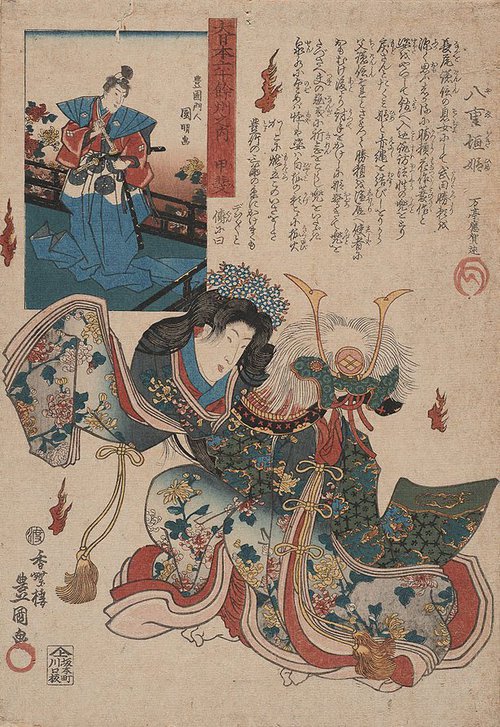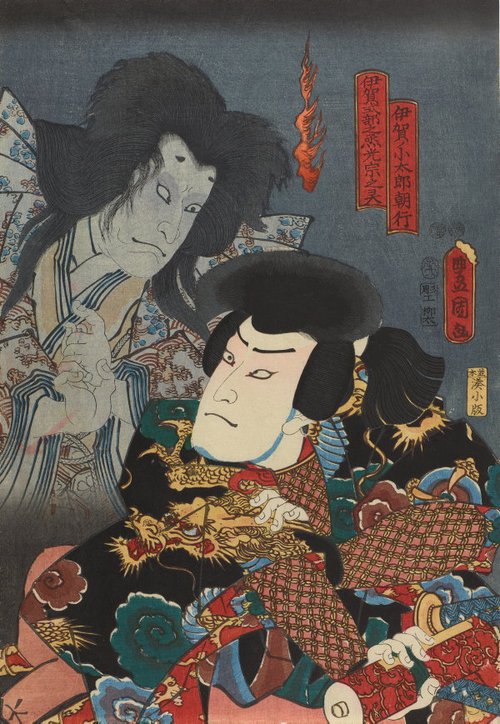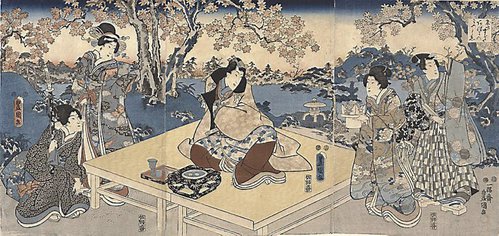Title
May - Yanone and June - Tenno festival
1859
Artists
-
Details
- Alternative title
- Mitate jû-ni kagetsu no uchi Go-gatsu Yane (illeg.) Roku-gatsu Tenno matsuri
- Place where the work was made
-
Japan
- Period
- Ansei era 1854 - 1860 → Edo (Tokugawa) period 1615 - 1868 → Japan
- Date
- 1859
- Media category
- Materials used
- woodblock print; ink and colour on paper
- Dimensions
- 35.9 x 25.2 cm image; 36.7 x 25.3 cm sheet
- Signature & date
Signed l.r., in Japanese, ink [incised on block] "Ichiyôsai Toyokuni hitsu [picture by Ichiyôsai Toyokuni, and artist's seal]". Not dated.
Signed u.l. [in the inserted image], in Japanese, ink [incised on block] "Kunihisa ga [picture by Kunihisa]". Not dated.- Credit
- Purchased 1994
- Location
- Not on display
- Accession number
- 647.1994
- Copyright
- Artist information
-
Utagawa Kunisada/Toyokuni III
Works in the collection
- Artist information
-
Utagawa Kunihisa
Works in the collection
- Share
-
-
About
The series from which this comes from is a 'mitate' (representation) of seasons, and this print depicts May and June. The characteristic makeup of the kabuki actor is called 'kumadori', and was developed from the 17th century. The various types of 'kumadori' emphasises the movement of facial muscles, and form an integral part of 'aragoto' plays (rough stuff). The red 'kumadori' indicates strength, which was probably the reason this image was chosen to represent May, the month of the Boy's Festival.
The play, Arrow Head ('Ya-no Ne') is one of the Eighteen Plays ('Kabuki Juhachiban') which was developed around 1832 as a selection of successful kabuki classics of the Ichikawa Family actors. Some of the eighteen plays have been absorbed into other plays, but Arrow Head, like Kanjincho, is one of the most popularly played items. In the story, Soga-no Goro, a popular kabuki hero who is planning to avenge his murdered father, falls asleep while sharpening large arrow heads. His brother Juro appears in the dream, calling for help. Goro wakes up, grabs a horse and rides away to rescue his brother.
The image of the Tenno festival in the insert is signed by Utagawa Kunihisa (1832-1891). Kunihisa studied under Kunisada and married his daughter.
Asian Art Department, AGNSW, November 1994.
-
Places
Where the work was made
Japan
-
Exhibition history
Shown in 1 exhibition
An Exhibition of Japanese Prints: From the Collection of Mrs. G. Halls, Peter Lane Gallery, Australia, 20 Sep 1994–01 Oct 1994





